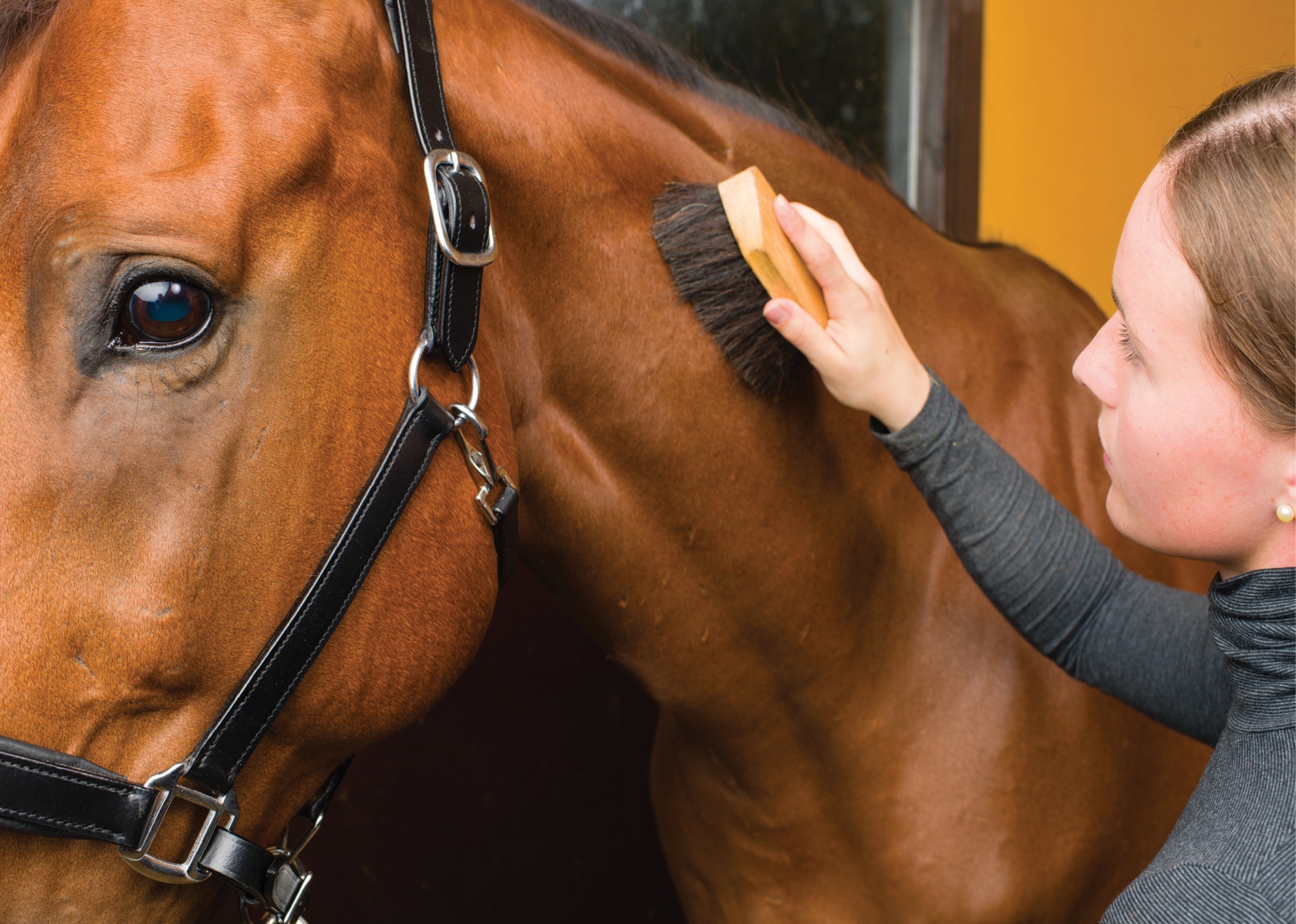

Building the perfect horse kit is crucial for every equestrian. Having the right tools and equipment ensures your horse is well-cared for and prepared for any situation, whether it’s a routine day at the stable or an unexpected emergency. This guide will walk you through the essential items needed to create a comprehensive and effective horse kit.
Grooming Essentials
1. Curry Comb:
The curry comb is your first tool for grooming. It helps to loosen dirt, hair, and other debris from your horse’s coat. Use it in a circular motion to stimulate the skin and promote blood circulation.
2. Body Brush:
After currying, the body brush removes the loosened dirt and hair. Choose a stiff-bristled brush for the body and a softer one for the face to ensure gentle care.
3. Mane and Tail Comb:
A wide-toothed comb is ideal for detangling your horse’s mane and tail without causing breakage. Regular brushing keeps the mane and tail healthy and free from knots.
4. Hoof Pick:
Cleaning your horse’s hooves is crucial for preventing infections and injuries. A hoof pick is essential for removing stones, dirt, and debris from the hooves.
5. Shedding Blade:
This tool is especially useful during shedding season, helping to remove loose hair and keep your horse’s coat smooth and shiny.
6. Grooming Tote:
Keep all your grooming tools organized and easily accessible with a sturdy grooming tote. It makes transporting your essentials around the stable much more convenient.
Tack and Equipment
1. Saddle:
Choose a saddle that fits both you and your horse. Comfort and proper fit are paramount to avoid discomfort and potential injuries. Options vary from English to Western saddles, depending on your riding style.
2. Bridle:
A well-fitting bridle is essential for effective communication between horse and rider. Ensure the bit is appropriate and comfortable for your horse.
3. Girth or Cinch:
This secures the saddle in place. It should be snug but not too tight, providing stability without causing discomfort.
4. Saddle Pad:
A saddle pad provides cushioning between the saddle and your horse’s back. It helps distribute pressure evenly and prevents sores.
5. Stirrups and Leathers:
Ensure your stirrups and leathers are the correct length and style for your discipline, providing comfort and security during rides.
Stable and Pasture Accessories
1. Feed Buckets:
Durable and easy-to-clean feed buckets are essential for feeding grains and supplements. Ensure they are hung securely to prevent spills.
2. Water Buckets:
Your horse should always have access to clean, fresh water. Automatic waterers can be a convenient option, ensuring your horse stays hydrated.
3. Hay Nets or Racks:
These keep hay off the ground, preventing waste and contamination. They also help control the amount of hay your horse consumes.
4. Muck Fork:
A muck fork is necessary for cleaning stalls and maintaining a hygienic environment. Regular cleaning helps prevent the buildup of harmful bacteria.
5. Bedding:
Choose the right bedding for your horse, whether it’s straw, shavings, or pellets. Proper bedding keeps your horse comfortable and dry.
Health and First Aid
1. First Aid Kit:
Include bandages, antiseptic creams, wound dressings, and scissors. A well-stocked first aid kit is crucial for handling minor injuries and emergencies.
2. Thermometer:
Monitoring your horse’s temperature can help detect early signs of illness. Keep a digital thermometer in your kit for accurate readings.
3. Fly Spray:
Fly spray helps repel flies and other insects, reducing irritation and the risk of disease. Choose a product that is safe and effective for your horse.
4. Deworming Paste:
Follow a regular deworming schedule as advised by your vet to maintain your horse’s health. Deworming paste is an essential part of this routine.
5. Veterinary Contact Information:
Keep your veterinarian’s contact information readily available for emergencies. Quick access to professional advice can be crucial in urgent situations.
Riding Apparel and Accessories
1. Riding Helmet:
A properly fitting helmet is vital for rider safety. Never compromise on quality when it comes to head protection.
2. Riding Boots:
Supportive, comfortable riding boots with a low heel are essential for safety and performance. They provide protection and improve your grip while riding.
3. Gloves:
Riding gloves protect your hands and offer a better grip on the reins. They are especially useful in cold or wet weather.
4. Riding Breeches:
Designed for comfort and flexibility, riding breeches are essential for any equestrian. They provide the necessary freedom of movement for effective riding.
Conclusion
Building the perfect horse kit involves careful consideration of both essential and situational needs. By equipping yourself with the right grooming tools, tack, stable accessories, healthcare items, and riding apparel, you can ensure the well-being of your horse and enhance your overall riding experience. This comprehensive guide serves as a checklist to help you assemble a well-rounded horse kit, ready for any situation that may arise in your equestrian journey.




At saddlepadhorse.com, we are excited to present our innovative Flip Flop Saddle Pads. These dual-sided saddle pads are designed for riders who value versatility and convenience.
© 2024 saddlepadhorse.com. All rights reserved.